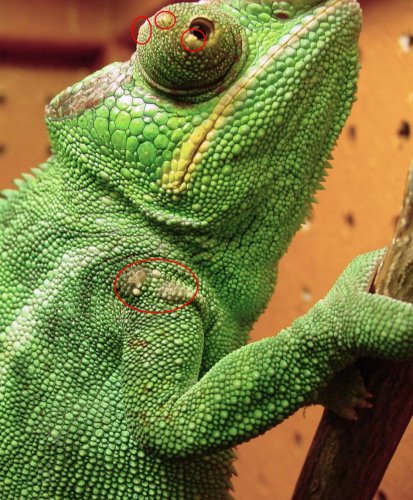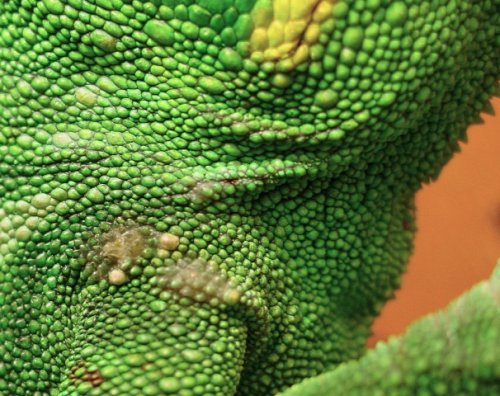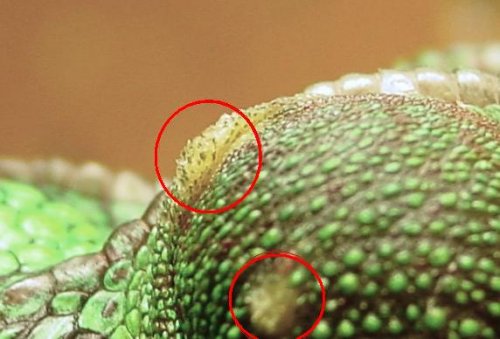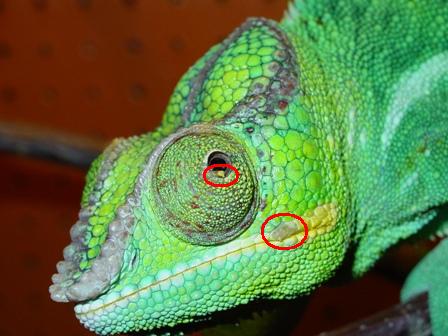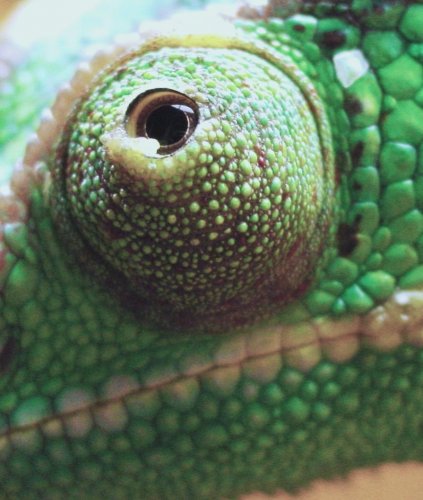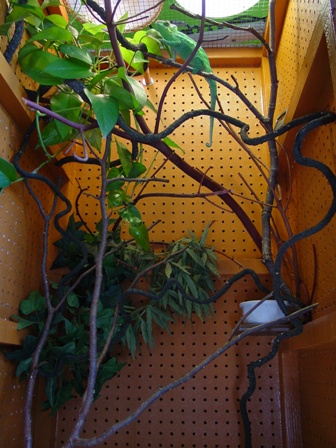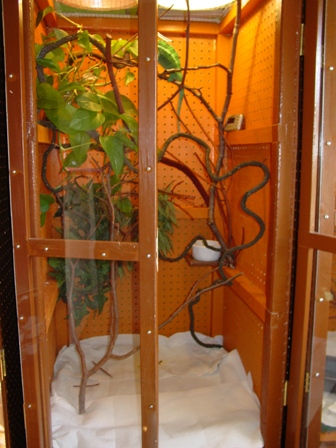sandrachameleon
Chameleon Enthusiast
Has anyone seen anything resembling this skin condition before?
This is Trucker, a Male panther, about 2 years old, otherwise active and behaving normally. I noticed these lumps on one eye turret and one shoulder a few weeks back. Thought at first it was just skin not fully shed off. Then when he shed again and the lumps appeared bigger, and now also on the other eye turret and on the mouth, even when I eased off the clinging dead skin, I became concerned.
I took him to the vet, who removed a few samples to test for fungus (which apparently takes quite awhile for results). She also suggests it could be a bacterial infection, or viral. So basically the vet says it could be anything and she really doesnt have a clue! In the meantime, She provided a topical ointment containing Biacitracin Zinc and Neomycin Sulfate, which I am to apply two or three times a day (and which he fights receiving).
I would appreciate any thoughts or suggestions.
His environment:
This is Trucker, a Male panther, about 2 years old, otherwise active and behaving normally. I noticed these lumps on one eye turret and one shoulder a few weeks back. Thought at first it was just skin not fully shed off. Then when he shed again and the lumps appeared bigger, and now also on the other eye turret and on the mouth, even when I eased off the clinging dead skin, I became concerned.
I took him to the vet, who removed a few samples to test for fungus (which apparently takes quite awhile for results). She also suggests it could be a bacterial infection, or viral. So basically the vet says it could be anything and she really doesnt have a clue! In the meantime, She provided a topical ointment containing Biacitracin Zinc and Neomycin Sulfate, which I am to apply two or three times a day (and which he fights receiving).
I would appreciate any thoughts or suggestions.
His environment:
- Temps range from lows of 19C (66F) at night; daytime lower cage ~23C (74F), top of cage ~30C (86F) and basking hot-spot ~32C (90F).
- Humidity 42%-57% normally (higher during misting of course).
- Previously was using a CFL Repti-glo 5.0 UVB, which was changed to a Reti-glo 10 linear yesterday (bulbs are on a six month replacement schedule).
- He usually eats three times a day (variety of roaches, crickets, kingworms, stick insects, butterworms, wood sows, mealworms...). Every morning meal is lightly calcium dusted, plus anytime the feeder is crickets (so up to twice daily). Calcium with D3 is used once or twice a month. Vit supplement is used about once a month.





